The first time I loaded my trailer, I thought I had it right.
I centered the weight, strapped everything down, and hit the road. But 10 miles in, the trailer started swaying. Hard. I pulled over fast—something felt wrong.
Turns out, I didn’t understand how axle placement affects balance. I had guessed. And that guess nearly caused a serious accident.
That moment pushed me to learn everything I could about trailer setups. I started asking questions, reading specs, watching experienced builders, and working on trailers hands-on. Over time, I learned what works—and what doesn’t.
If you’re here, you’re probably trying to check or adjust your trailer, fix a balance issue, or plan a new build. You want answers that make sense.
This article will show you exactly where the axle sits on a trailer, why that matters, and how it connects to weight, safety, and long-term performance.
By the end, you’ll have the knowledge to adjust, repair, or customize your trailer the right way.
So let’s get down to it!
1. What Is an Axle and What Does It Do?
Let me put it simply—if your trailer didn’t have an axle, it wouldn’t roll.
But it’s more than just something that holds the wheels.
A trailer axle is a long metal bar. It runs under the trailer and connects the wheels on both sides. Sounds basic, right? But this one part does a lot of heavy lifting—literally.
When I first learned about axles, I thought it was just about wheel placement. I didn’t realize how much it affects the whole trailer. One time, I loaded a trailer too far forward. The back of my truck felt light, and the trailer swayed like crazy. Turns out, I didn’t respect what the axle was doing.
Here’s what the axle really does:
- Carries the trailer’s load. It spreads the weight across the frame.
- Keeps the trailer steady while towing.
- Helps balance the trailer and towing vehicle.
Without the axle in the right spot—or in good shape—your trailer won’t pull safely.
Ever felt your trailer bounce too much? Or lean on one side? It might be the axle.
Knowing what the axle does is the first step to using your trailer the right way.
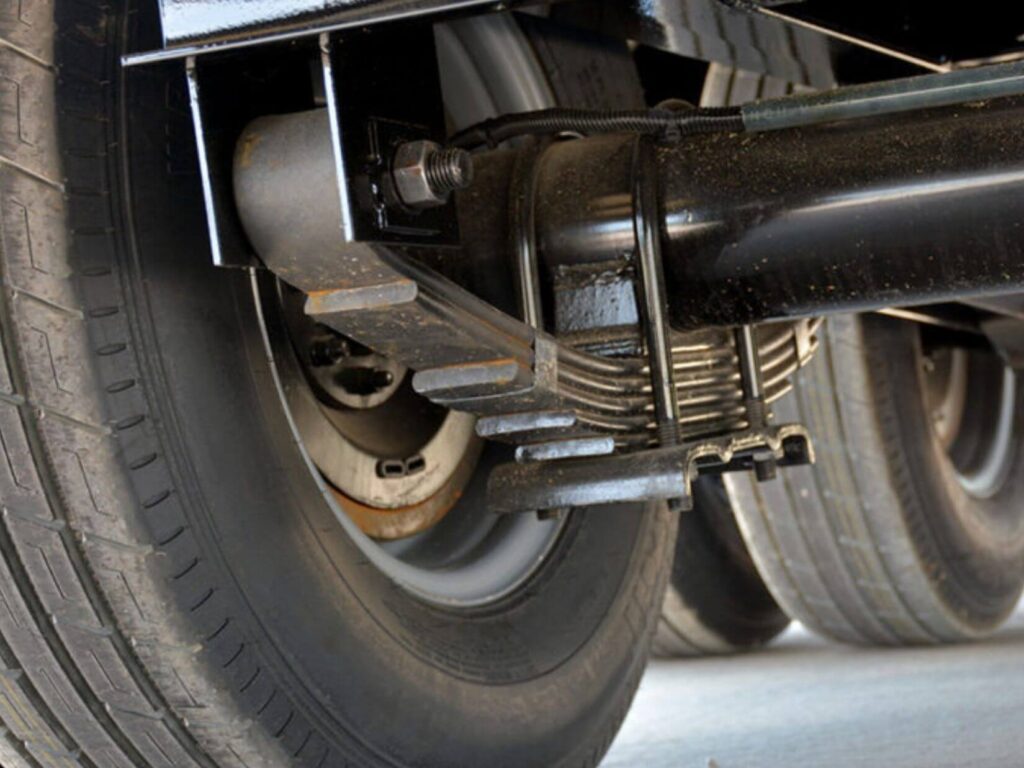
2. Where Is the Axle Located on a Trailer?
I once helped a friend build a small utility trailer, and we centered the axle thinking it made perfect sense. But on the road, the trailer swayed like crazy. Just a few inches off made all the difference.
Most trailer axles are actually placed slightly behind center. This setup helps balance the load better and improves stability while towing. It’s a small design choice—but one that really matters.
So what decides where the axle should go?
There are a few key factors:
- Load distribution: You want about 60% of the load in front of the axle, and 40% behind. This keeps the trailer stable and puts the right amount of pressure on the hitch (called tongue weight).
- Type of trailer
- A single axle trailer usually has one axle near the rear half, just behind the center.
- A tandem axle trailer spreads weight across two axles, so the placement depends on how long the trailer is and what it carries.
- Manufacturer’s design: Each trailer is built with a specific job in mind—like hauling machinery, animals, or pallets. The axle location is set to match those needs.
Understanding axle placement helps you tow more safely, load smarter, and avoid problems on the road. Whether you’re fixing, adjusting, or customizing, this knowledge gives you a solid starting point.
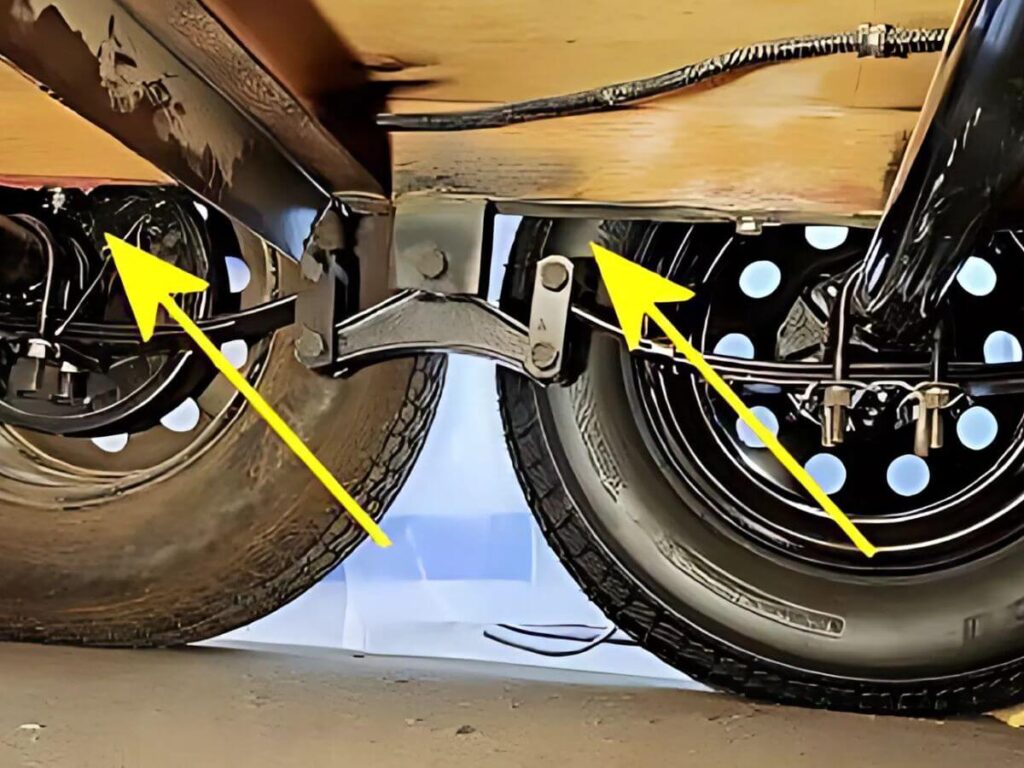
3. Different Types of Trailer Axles and Their Positioning
Not all trailers use the same type of axle. The kind of axle—and where it’s placed—can change how your trailer rides, turns, and handles weight. If you’ve ever felt a trailer sway, drag, or bounce, chances are the axle setup wasn’t right.
I learned this while helping a neighbor tow a fully loaded equipment trailer. Everything looked fine, but once we got on the road, every bump felt like a punch. That experience made me pay more attention to axle types and placement. Let’s look at the common setups:
Single Axle Trailers
These are used on small to medium trailers, like utility trailers or light cargo haulers. The axle is usually placed just behind the center of the trailer bed. This allows a larger share of the weight to sit in front of the axle, which helps with towing balance. Single axles are simple and cost-effective, but they’re best for lighter loads.
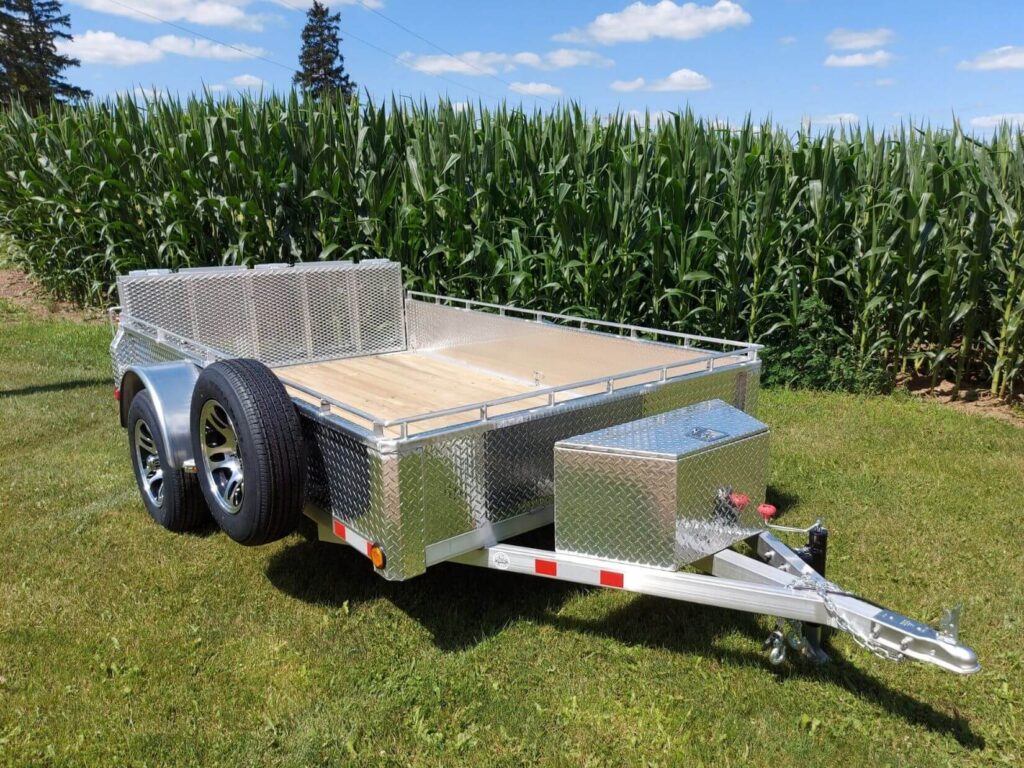
Tandem Axle Trailers (Two Axles)
These are made for heavier loads and longer trips. You’ll see them on car haulers, construction trailers, and large flatbeds. The two axles are spaced close together and placed near the center of the load. This helps spread out the weight, improve braking, and keep the trailer steady at higher speeds.
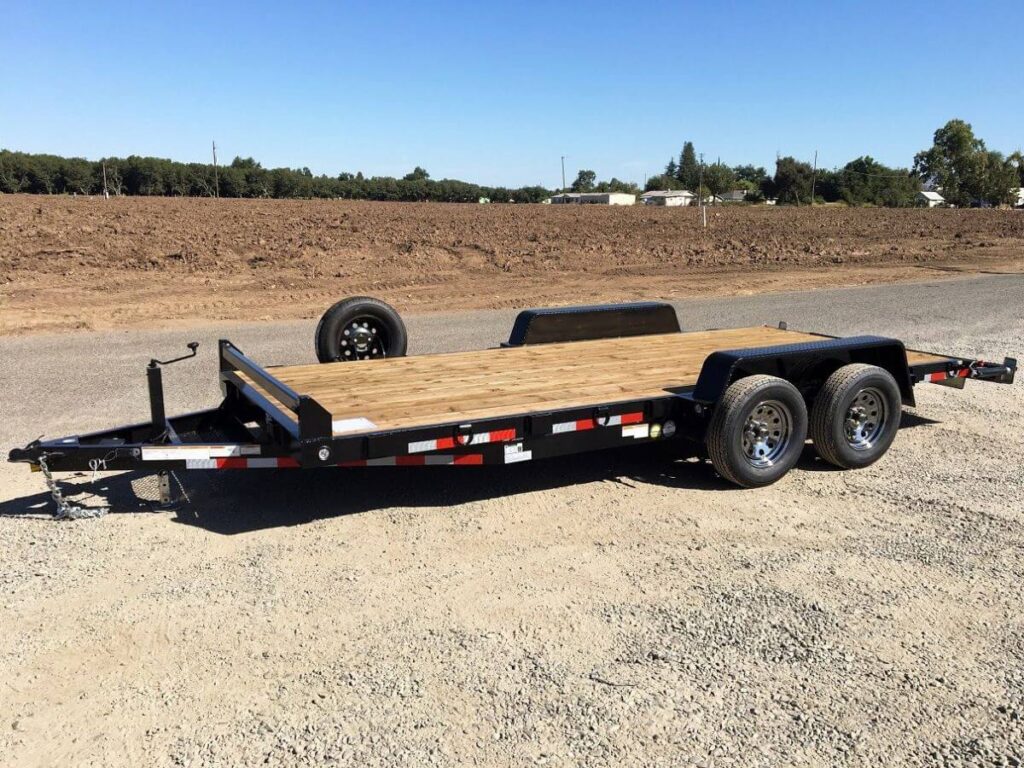
Triple Axle Trailers (Three Axles)
These are built for the heaviest jobs, such as hauling large machinery or mining equipment. The axles are spaced further back to handle more weight and absorb road shock better. While they add strength and stability, turning in tight spots becomes more difficult.
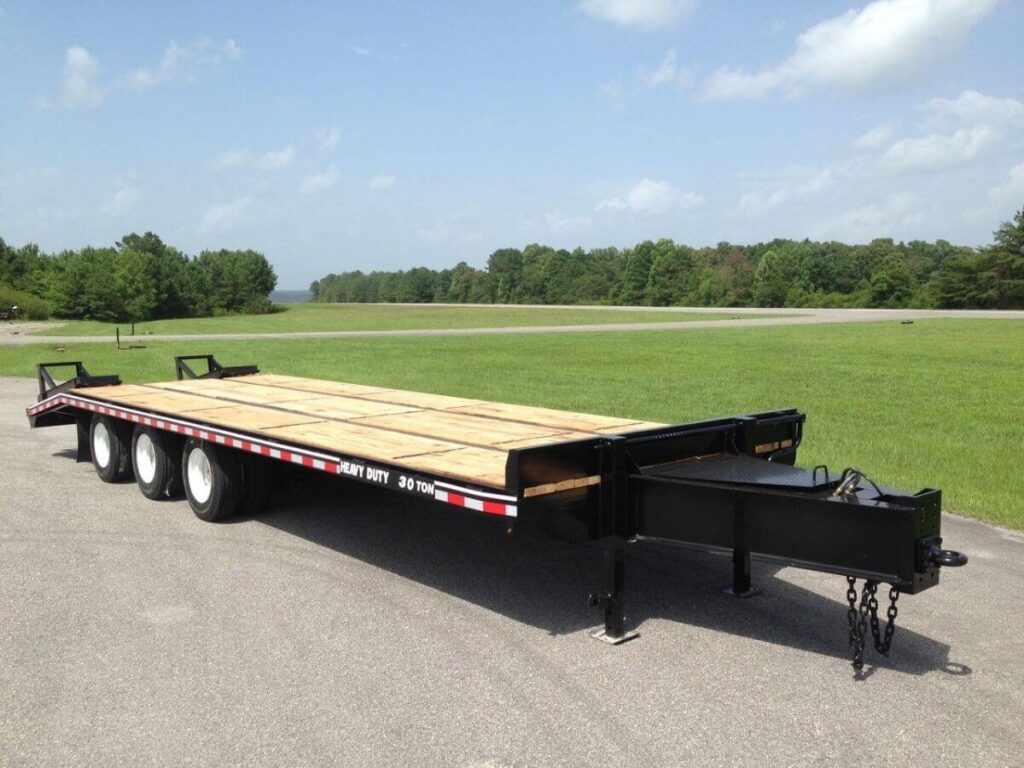
Axle Suspension Types
The suspension holds the axle in place and affects how the trailer handles rough roads.
- Straight axle: The standard choice. Common, simple, and reliable.
- Drop axle: Lowers the trailer deck height for easier loading.
- Torsion axle: Uses rubber cords instead of leaf springs. Quieter and smoother on the road.
Knowing your axle type and where it’s placed helps you match your trailer to the job. Whether you’re towing light gear or serious equipment, the right setup makes all the difference.
4. How to Measure and Locate the Axle in a Trailer
Wondering where your axle should go? Or maybe you’re building or adjusting a trailer and want to get it right. I’ve been there—and I’ve made mistakes before figuring it out.
Axle placement isn’t something you should guess. It affects how your trailer tows, how it handles weight, and how safe it is on the road.
Here’s a step-by-step way to measure and mark the correct axle position.
What You’ll Need
- Measuring tape
- Chalk or marking pen
- Tongue weight scale or calculator
Optional: a level surface and jack stands for more accurate measuring.
- Step# 1: Measure the Total Deck Length: Use a tape measure to get the full length of your trailer’s bed, from the front edge to the back. Don’t include the tongue—just the actual cargo area.
- Step# 2: Find the Midpoint: Divide the trailer bed length by two. This gives you the center point. Mark it with chalk or a marker.
- Step# 3: Shift Slightly Behind Center: Move your mark back a bit—about 4 to 6 inches behind the midpoint. This shift allows about 60% of the trailer’s weight to sit in front of the axle, and 40% behind it. That’s called the 60/40 rule, and it helps keep your trailer stable during towing.
- Step# 4: Check the Tongue Weight: Tongue weight is the downward force the trailer puts on the hitch. You can measure it with a tongue weight scale or gauge. According to the National Association of Trailer Manufacturers, the ideal tongue weight should be around 10–15% of the total loaded trailer weight.
Why This Matters
Bad axle placement can cause trailer sway, uneven tire wear, or even damage to your towing vehicle. Whether you’re hauling farming tools, heavy parts, or bulk goods, keeping the load balanced helps prevent problems down the line.
So take the time to measure. It’s a simple step that makes your trailer safer, smoother, and easier to work with—no matter what you’re hauling.
5. Signs of Incorrect Axle Placement
I once helped a friend move equipment on a trailer he had just modified himself. It looked solid—but 20 minutes into the drive, the trailer started swaying all over the lane. Turns out, his axle was mounted too far back. That one small mistake turned a simple job into a stressful haul.
If your trailer doesn’t feel stable, axle placement could be the issue. Here are the most common warning signs to look out for:
Trailer Sway at High Speeds or During Turns
If your trailer sways side to side while driving, especially above 50 mph, the axle may be too far back. This causes the front of the trailer to become too light, which makes it harder to keep in line with your tow vehicle. It’s one of the most common signs of poor weight balance—and it’s dangerous. At Rhinotrail, axle placement is carefully engineered to prevent this kind of instability, helping drivers stay safe even at higher speeds.
Uneven or Fast Tire Wear
Are your trailer tires wearing out faster on one side? That usually means the load isn’t being carried evenly. Axle misplacement shifts pressure onto one side, which puts extra stress on the tires and shortens their life. It can also affect how the trailer handles bumps and corners.
Poor Braking Performance
If your trailer feels like it’s pushing your tow vehicle during braking, the axle might be too far forward or back. This changes how weight is transferred when you slow down. A poorly balanced trailer takes longer to stop and can make braking feel jerky or unsafe—especially when carrying heavy loads.
Heavy Tongue Weight or a “Light” Rear Feeling
Too much tongue weight causes your truck to sag in the back. Too little makes the trailer feel like it’s lifting or floating at the hitch. In both cases, the trailer isn’t balanced, which affects your control and safety. Use a tongue weight scale to check—10–15% of the total loaded trailer weight is the general rule (source: NATM).
Trailer Leans to One Side When Loaded
If your trailer leans, even when the cargo looks balanced, check the axle placement. It may be off-center or mounted unevenly. This creates problems with the frame, tires, and suspension system. Over time, it can lead to serious wear and even damage.
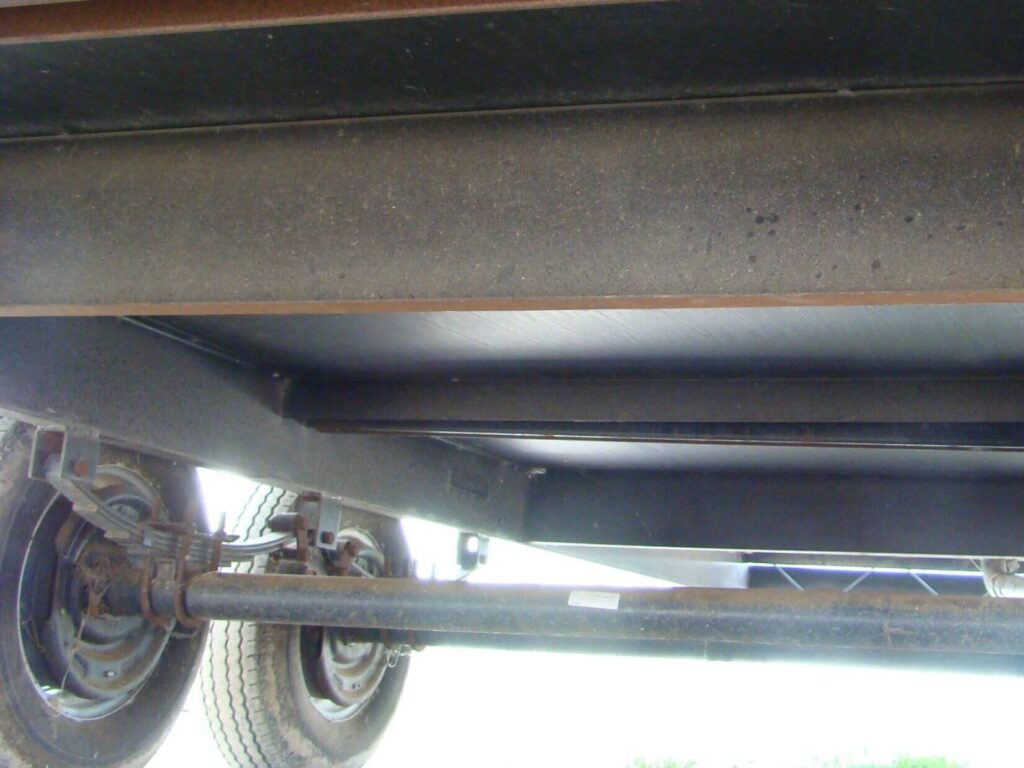
6. Common Mistakes to Avoid When Positioning an Axle
I’ve seen trailer builds go wrong—not because the frame was bad, not because the parts failed, but because the axle was in the wrong spot. A few inches off can change the way the trailer handles, wears down, or even fails on the road. If you’re placing or replacing an axle, here are some common mistakes you’ll want to avoid:
Placing the Axle at the Exact Center
This one is easy to do—and easy to get wrong. Putting the axle right in the middle might seem balanced, but it actually causes handling problems.
Why? It breaks the 60/40 weight rule:
- 60% of the total load should be in front of the axle
- 40% should sit behind it
With a centered axle, the tongue weight becomes too light. That leads to sway, bounce, and poor towing control.
Ignoring Load Type and Weight Class
Different trailers carry different kinds of loads. Some are fixed, like machinery. Others shift, like gravel, livestock, or stacked boxes.
If you don’t consider the load type, you risk bad weight balance. Ask yourself:
- Does cargo move during transit?
- Is it heavy in one section and light in another?
- Will I be hauling the same thing every time?
Axle placement should match how your load behaves. That’s why manufacturers like Rhinotrail design trailers with axle positions suited for real hauling conditions—whether you’re moving bulk materials, equipment, or agricultural goods. The right setup helps protect both your cargo and your vehicle.
Guessing Instead of Measuring
“Close enough” doesn’t work with axles. Eyeballing might seem faster, but it usually means redoing the job later.
What to do instead:
- Measure the full trailer deck length
- Find the midpoint
- Shift the axle slightly behind center
- Use chalk or tape to mark it
That extra 10 minutes could save you hours of rework.
Not Checking Axle Alignment After Installation
Even if you place the axle in the right spot, it still needs to be square. Misalignment is a silent problem that leads to:
- Tire drag
- Uneven wear
- Axle damage under heavy loads
Measure from each side of the axle to a fixed point on the trailer frame. If the distances don’t match, realign before use.
If you avoid these mistakes, your trailer will tow straighter, stop safer, and last longer. A good axle setup starts with careful planning—not guesswork.

7. Safety Tips for Maintaining Proper Axle Positioning
Getting the axle in the right place is just the start. Over time, things shift—especially if your trailer hauls heavy loads or travels over rough ground. A few simple checks can help you avoid trouble down the road.
#1 Inspect Regularly for Wear or Damage
If you’re using your trailer in harsh environments like farms, oilfields, or construction sites, your axle setup takes a beating. Dirt, vibration, and moisture can wear down brackets, bolts, and mounts. Look for cracked welds, rust, or bent hardware—especially around the axle and suspension area.
#2 Monitor Tire Pressure and Wear Patterns
Tires can show early signs of a problem. Uneven wear, bald spots, or low pressure may point to a misaligned axle. Check tire pressure before every haul and keep an eye on the tread. It’s a simple habit that can prevent bigger issues.
#3 Keep Axle Bolts and U-Bolts Tight
Axles are held in place by bolts and U-bolts, and these can loosen with time—especially under heavy loads. If they shift, the axle might move out of place without you realizing it. Use a torque wrench to check tightness regularly and retighten as needed.
#4 Recheck Positioning After Modifications or Repairs
Even small changes—like adding a toolbox or replacing the trailer floor—can affect balance. A shift in weight might throw off your axle placement. After any updates, measure your trailer deck again, confirm the 60/40 rule, and make sure your axle is still square and centered.
Keeping your axle positioned properly doesn’t take much time, but it keeps your trailer safe and reliable—trip after trip.
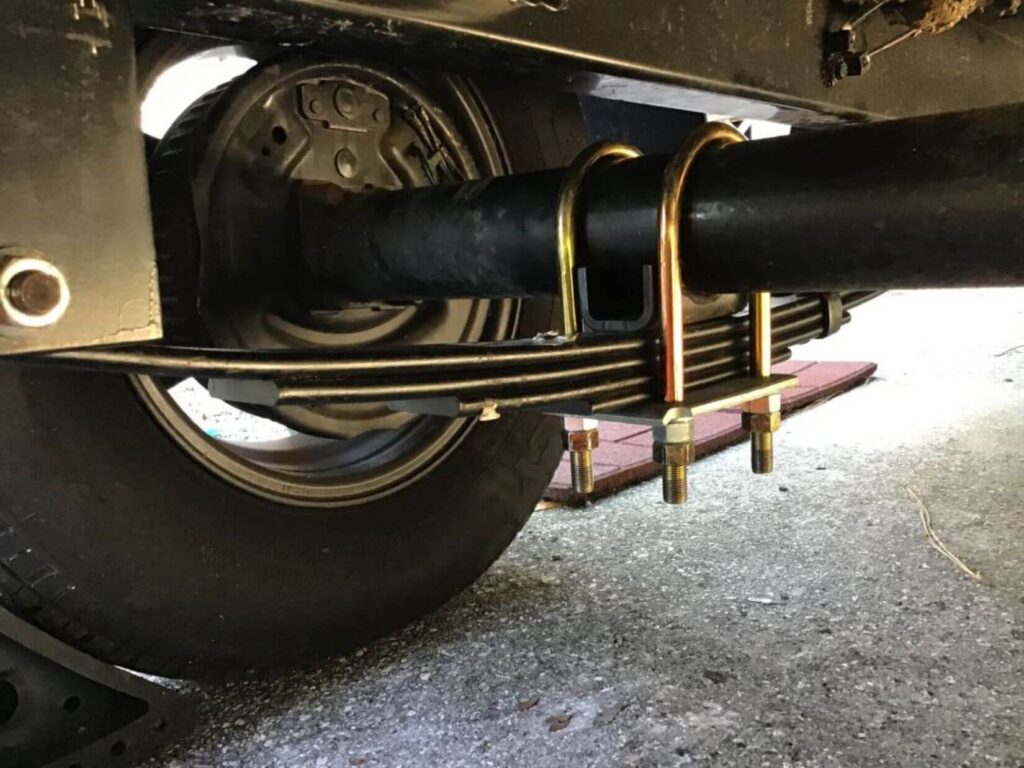
Conclusion
Axle placement isn’t just a detail. It controls how your trailer drives, how it wears down, and how safe it is.
We walked through what an axle does, where to find it, how to measure it, and what mistakes to avoid. Now it’s your turn to put that into action.
You don’t have to second-guess anymore. You’ve got knowledge. Use it.
Are you ready to take the first step?
Contact us today to get started.


